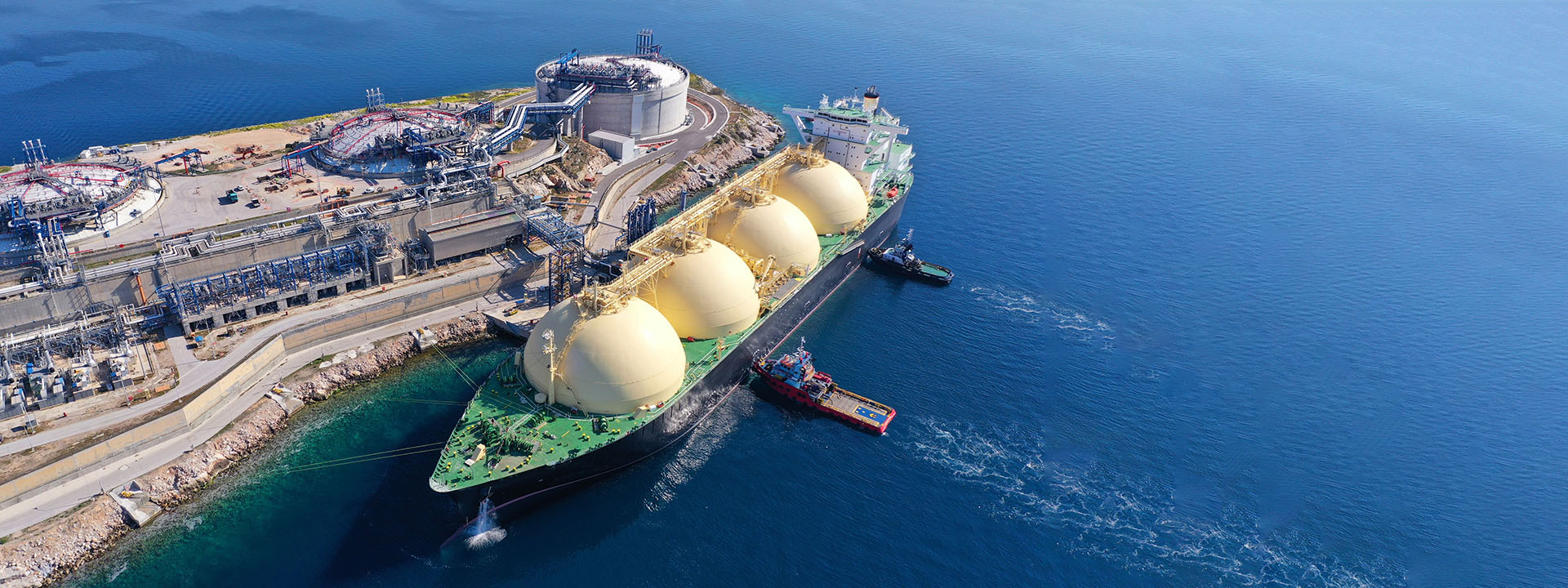Natural gas has carved a special role in the global energy market, standing as one of the most diverse and environmentally friendly fossil fuels available today. This energy source, primarily composed of methane, provides essential fuel for heating, electricity generation, industrial processes and more. Its significance has only grown as countries worldwide seek to transition toward cleaner energy alternatives, positioning natural gas as a bridge fuel between coal & oil and renewables.
Taking into consideration heightened energy security concerns, we have recently stepped into the trade financing of natural gas in Romania to contribute to the energy security during the winter period. Being a reliable trade finance partner, we help ensure liquidity in the supply chain and support energy generation continuity.
Production of Natural Gas: Conventional and Unconventional Sources
Natural gas is derived from two primary sources: conventional gas fields and unconventional resources like shale, tight gas, and coalbed methane. Conventional gas is typically found in reservoirs, which can be tapped relatively easily, while unconventional gas requires more advanced approach, such as hydraulic fracturing or horizontal drilling, to extract gas embedded in shale rock formations.
In 2023, global natural gas production reached approximately 4.1 trillion cubic meters and expected to grow up to 5.3 trillion cubic meters by 2050.
The United States leads global natural gas production with around 1 tcm, largely due to its shale gas revolution, which transformed regions like the Permian Basin and Marcellus Shale into key production hubs. Russia, Iran, Canada and Qatar follow closely behind, with each country contributing significantly to global supply through vast reserves and extensive infrastructure.
Natural gas fuels multiple sectors, with nearly 35-40% of global production allocated to electricity generation, underlining the importance in stabilizing grids worldwide. This significant share of electricity production highlights gas crucial role in supporting energy demands and offsetting intermittent renewable sources.
In 2023 alone, natural gas was responsible for generating over 6,600 terawatt-hours of electricity worldwide, representing approx. 23% of the total global electricity generation.
The Global Trading Landscape
Natural gas trading is a complex web that involves both regional and international markets. It is traded either as pipeline gas or LNG. Unlike traditional oil and coal, which have mostly global prices, natural gas prices are region-specific due to the costs of transporting and storing the fuel. Therefore, its trading landscape varies significantly by geography:
- Americas: The Henry Hub in the United States is the primary natural gas benchmark, which influences prices in North American markets.
- Europe: The Title Transfer Facility in the Netherlands is Europe’s main gas trading point, setting prices that are highly sensitive to regional demand, especially given recent concerns over energy security and reliance on imports.
- Asia: The Japan Korea Marker benchmark is the primary price indicator for LNG in Asia, with Japan, South Korea, and China being major importers.
Pipeline gas is typically traded between neighboring or nearby countries due to the logistical constraints and high costs associated with building and maintaining pipelines over long distances. This mode of transport is most common in regions like Europe and Eurasia, where extensive pipeline networks connect major to key consumer markets across regions.
For instance, Russia supplies significant volumes of natural gas to China, Turkey and other countries through several major pipelines, including the Power of Siberia and TurkStream. Such pipeline networks facilitate continuous, large-scale gas transportation, making it cost-effective for steady supply and more stable pricing in certain regional markets. However, pipeline dependence can make importing countries more vulnerable to geopolitical tensions or supply disruptions, underscoring the importance of LNG as a flexible alternative.
LNG has brought natural gas into the international spotlight by making it possible to transport gas over long distances. In 2023, the U.S., Australia and Qatar led the way as global LNG exporters, while Japan and China were the largest importers, meeting demand spikes and diversifying sources. The advent of LNG allows natural gas to be shipped and traded globally, transforming it into a more flexible, transportable commodity and enabling it to compete more directly with coal and oil.
According to 2023 figures, the global volume of natural gas traded reached approximately 1.5 tcm.
Of this, pipeline gas accounted for about 940 billion cubic meters, while LNG trade contributed around 560 bcm. Thanks to its numerous advantages and transportation flexibility, total share of LNG is anticipated to grow further.
More than just energy source
Beyond its role in energy and electricity production, natural gas serves as a critical feedstock for various refined products with widespread industrial and commercial applications. Through processes like natural gas refining and processing, valuable byproducts such as ethane, propane, butane, and natural gas liquids are extracted. These refined products are essential for industries ranging from petrochemicals to residential heating and transportation. Here are the most known of them:
- Ethane and Propane are key components in the petrochemical industry, serving production of ethylene and propylene, foundational chemicals for manufacturing plastics, resins, and synthetic fibers.
- Butane is commonly used in fuel blending as well as in production of liquefied petroleum gas, which is widely used for heating and cooking.
- Gas Liquids include a range of hydrocarbons extracted during gas processing, with applications in production of solvents, refrigerants, and even certain types of fuel.
Refined natural gas products underscore the resource’s economic versatility, creating value far beyond simple combustion for energy. By capturing these refined products, countries can expand industrial production capacities, reduce waste, and diversify export options, contributing to their economy. This adds a significant layer to the importance of natural gas and highlights its multifaceted role beyond electricity generation alone.
Future Prospects
Compared to coal and oil, natural gas produces substantially lower carbon emissions, sulfur oxides, and particulates, which has led to its reputation as a “cleaner” fossil fuel. This environmental advantage has driven its adoption as countries work to reduce greenhouse gases. As technology advances, renewable natural gas forms like biomethane, produced from organic waste, and synthetic methane produced using renewable energy offer promising alternatives, allowing for even more sustainable natural gas.
Looking ahead, natural gas will continue to be integral to the energy landscape, though its role will likely shift in the future as renewable energy sources are supposed to become more dominant. In the short to medium term, natural gas demand is expected to grow, especially in developing regions where energy needs are on the rise. Even in developed economies, gas will remain essential for ensuring a reliable and stable energy supply during the ongoing shift to renewables. As its role evolves to meet global energy demands while aligning with sustainability goals, we are ready to increase our gas products portfolio by providing tailor-made trade finance solutions for the commodity industry.


